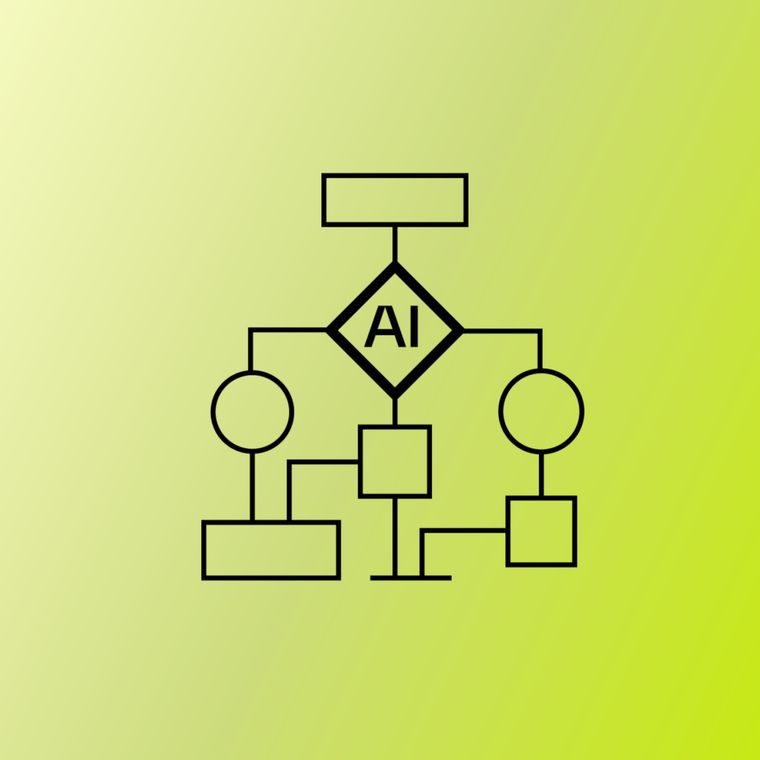Why Email Needs An Exclusive Approach to Vulnerability Scanning
Find out why email needs its own approach to vulnerability scanning and how to spot hidden threats.
August 11, 2025
Modern cybercriminals have abandoned the need for sophisticated break-ins. Instead, they rely on invitation. A single well-crafted email can bypass enterprise firewalls, slip past traditional security scanners, and deliver its payload directly to the target's inbox. Despite this reality, most vulnerability scanning frameworks continue to approach email security through conventional system-based methodologies, systematically overlooking both the human behavioral factors and the adaptive nature of contemporary threat vectors.
At present, these cyberattacks exploit trust, not technical flaws. They impersonate executives, manipulate suppliers, and hijack ongoing conversations, which are all tactics that no patch or scan can catch. These threats demand a different kind of defense, one built specifically for the inbox.
The traditional cybersecurity playbook assumes attackers will exploit technical vulnerabilities in systems and networks. But email attacks sidestep this entirely, weaponizing human psychology and organizational relationships instead. While security teams invest heavily in perimeter defenses and system hardening, the inbox remains a blind spot, protected by outdated tools designed for the obsolete threat landscape. This fundamental disconnect explains why email needs its own approach to vulnerability scanning.
Limitations of Traditional Vulnerability Scanning for Email
Traditional vulnerability scanners cannot protect email environments because they were designed for static infrastructure, not dynamic cloud email platforms. These limitations tend to expose organizations to sophisticated email-based attacks.
Here are some of the limitations of traditional vulnerability scanning for email:
Missing Critical Email Attack Surfaces
Legacy tools scan for software flaws with published Common Vulnerabilities and Exposures (CVEs), so they miss the phishing payloads, spoofed domains, and over-permissive OAuth integrations that carry no CVE designation. The critical exposures inside Microsoft 365 or Google Workspace remain invisible. Network discovery cannot enumerate shadow assets like forwarding rules, sanctioned add-ins, and vendor mailboxes, leaving significant blind spots in your security posture.
Overwhelming Alert Volume Without Context
Traditional scanners often produce endless lists of potential issues, many of which don’t apply to your actual email environment. Security teams waste time sorting through false positives instead of addressing real threats. Without insight into user behavior or message intent, these tools miss the context that separates harmless anomalies from true risks, burying critical vulnerabilities under layers of noise.
Static Scanning Cannot Match Dynamic Threats
Scheduled scans produce outdated snapshots that cannot keep pace with rapidly evolving email threats. Attacks adapt in real-time, exploiting trust relationships and business processes that static signatures cannot detect. Continuous monitoring maps every mailbox and scores risks based on observed behavior rather than theoretical vulnerabilities.
Lack of Visibility into Cloud and SaaS Environments
Traditional security tools focus primarily on perimeter and endpoint assets, creating significant blind spots in cloud email environments. These scanners lack the APIs and permissions necessary to inspect cloud-based messaging platforms where modern email threats thrive.
As organizations migrate to Microsoft 365 and Google Workspace, these visibility gaps become more dangerous, leaving security teams unable to detect compromised accounts, suspicious forwarding rules, or malicious third-party integrations.
These limitations demonstrate why email-centric threats require purpose-built, behavior-driven scanning that traditional network tools cannot deliver.
Unique Email Vulnerabilities That Need Specialized Scanning
Unlike conventional malware that exploits software bugs, email threats manipulate organizational trust and business processes, creating blind spots that standard security tools cannot address.
The following are some unique email vulnerabilities that need to be addressed by specialized screening:
Phishing and Spear Phishing
Phishing remains the primary danger as more than 90% of cyberattacks begin with a phishing email. Spear phishing takes that threat further by tailoring messages to executives, finance staff, or IT administrators, luring them to malicious links. The abuse lives in the message body and the user's mind, and not in software code. This is the reason why traditional scanners never register a vulnerability.
Business Email Compromise (BEC)
Business Email Compromise amplifies this threat further. Attackers impersonate trusted executives or vendors to request wire transfers or sensitive data. These messages contain no malware, so network or endpoint tools stay silent while you face significant fraud.
Configuration Oversights
Configuration oversights widen the gap through over-permissive mailbox permissions and reused credentials that allow attackers who gain a single login to fan out and search inboxes. Network scans can't map these mailbox-level exposures because they live inside the cloud platform, not on the wire, while attackers set auto-forwarding rules evading gateway logging.
Third-Party Integrations
Third-party integrations add another blind spot, as OAuth tokens granted to project-management or CRM apps often persist indefinitely without proper lifecycle management or oversight. When attackers steal a token, they bypass MFA entirely, reading and sending messages through sanctioned channels, while scanners focused on IP addresses see nothing wrong.
Email-centric security scanning tools that analyze message headers, permission structures, OAuth token scopes, and communication patterns are essential for addressing these unique vulnerabilities.
Why Behavior-Based and Continuous Monitoring Matters
Behavior-based, continuous monitoring uncovers real-time anomalies by learning from ongoing activity. It adapts instantly to changes across cloud mailboxes, user behavior, and third-party integrations, delivering precision at the speed of modern threats.
Static Scans Miss Adaptive Threats
Signature-driven tools detect known issues after they’re public. They fail against first-seen phishing, polymorphic malware, or novel social engineering. Behavioral monitoring builds dynamic baselines per user, flagging unusual login times, tone changes, or suspicious IP activity in real time. This model, backed by research, catches emerging threats early without needing CVEs or blacklists.
Continuous Behavioral Analysis Cuts Noise
Behavioral systems reduce false positives by detecting meaningful deviations from regular activity. The alerts carry context such as sender history, timing, and business relevance, so that analysts can focus on real risks. Combined signals, like odd logins plus inbox rule changes, reveal compromise patterns and trigger automated response playbooks.
Behavior-based, continuous monitoring delivers faster, more accurate threat detection where legacy scans fall short. It’s the proactive approach modern email security demands.
Integrating Risk Prioritization into Email Vulnerability Scanning
To effectively mitigate threats, email vulnerability scanning must prioritize weaknesses based on real-world risk. That means evaluating both the technical exploitability of a vulnerability and its potential business impact.
Rather than overwhelming security teams with undifferentiated alerts, advanced scanning should surface the exposures most likely to be exploited and cause harm. Here’s what you need to implement:
Prioritize Based on Business Impact and Exploitability
Not all vulnerabilities carry the same level of risk. Security teams must prioritize based on the ease of exploitation and the potential damage that could be caused by that exploitation to the organization.
This dual-lens approach weighs technical indicators, such as the attacker’s ability to exploit a misconfiguration or stolen credential, alongside business factors like access to sensitive systems, financial workflows, and executive communications.
Align Findings with User Roles and Access Levels
Email security systems must account for user roles, access levels, and behavioral baselines when evaluating risk. Activity on executive or finance accounts that deviates from normal patterns should trigger a higher risk score than similar behavior in lower-risk profiles. This context-aware approach elevates the most consequential threats and enables smarter, faster decisions.
Automate Response Workflows
Automated response workflows reduce triage time and contain threats within seconds by quarantining messages, revoking OAuth tokens, or initiating password resets based on real-time risk assessment. This automation empowers SOC teams to focus on strategic threats while ensuring immediate mitigation of high-risk incidents.
Building a Proactive Email Security Posture Beyond Scanning
Adequate security requires continuous monitoring, automated response, and user education working together, and it is this holistic approach that creates a robust defense that adapts to emerging attack vectors.
Let’s understand the steps in this process:
Combining Vulnerability Scanning with AI-Driven Threat Detection
While vulnerability scanning plays a critical role in identifying misconfigurations and access issues, it can’t detect threats that exploit human behavior or legitimate credentials. AI-powered detection adds this missing layer, analyzing message patterns, user behavior, and communication context to reveal subtle, high-impact threats. This combined approach delivers a broader and more accurate view of an organization’s email security posture.
Continuous Telemetry and Real-Time Analytics
Periodic scans expose misconfigurations, but they do little against the adaptive attacks you face daily. Real-time telemetry from cloud mail systems, identity providers, and integrations enables platforms to learn normal behavior and flag anomalies instantly. This constant visibility eliminates the delays and blind spots created by periodic scans.
Automated Response Integration
Linking behavioral insights to automated actions, such as isolating suspicious messages or resetting compromised accounts, shrinks response time and boosts analyst productivity. Security teams gain time for deeper investigations instead of sifting through low-priority alerts.
Training and Awareness as Part of a Holistic Strategy
Security awareness is a critical layer of defense, not a compliance checkbox. Advanced technology alone can’t stop every threat, especially those exploiting human trust through social engineering. Ongoing training, realistic phishing simulations, and just-in-time education help users recognize and report suspicious activity.
These reports enhance threat detection, refine AI accuracy, and reduce overall incident volume. Continuous education turns users from potential liabilities into informed, active participants in your security posture.
Continuous Validation and Adaptive Defense Mechanisms
Maintaining a strong security posture means testing it. Phishing simulations, red team exercises, and control assessments validate what’s working and highlight gaps. Insights from these tests fuel adaptive defenses that evolve in sync with attacker behavior.
Overall, email security needs a proactive, behavior-based approach to strengthen defenses at every layer, from systems to people, building resilience against the full spectrum of modern threats.
How Abnormal AI Elevates Email Vulnerability Scanning
Modern threat landscapes demand security solutions that move beyond reactive detection to proactive, intelligent defense systems designed for today's sophisticated attack methods. Organizations implementing purpose-built email security platforms gain decisive advantages against the most persistent and financially damaging attack vector in cybersecurity.
Abnormal's AI platform transforms email security through continuous behavioral analysis, establishing dynamic baselines of normal communication patterns to identify subtle deviations that signal emerging threats. Where traditional scanners rely on static signatures and miss sophisticated social engineering tactics, Abnormal's machine learning algorithms detect anomalies in sender behavior, message content, and communication timing that indicate advanced persistent threats and business email compromise attempts.
The platform's continuous learning capabilities enable real-time adaptation to evolving attack methods, maintaining precise behavioral models for each user while correlating email patterns with broader organizational communication flows. This intelligence-driven approach delivers prioritized threat assessments and actionable remediation guidance, enabling security teams to reduce mean time to detection while demonstrating quantifiable risk reduction across the email attack surface.
Security leaders seeking to transform their email vulnerability management can request a demo to evaluate how Abnormal's behavioral AI addresses gaps that traditional scanning approaches consistently miss.
Related Posts
Get the Latest Email Security Insights
Subscribe to our newsletter to receive updates on the latest attacks and new trends in the email threat landscape.


